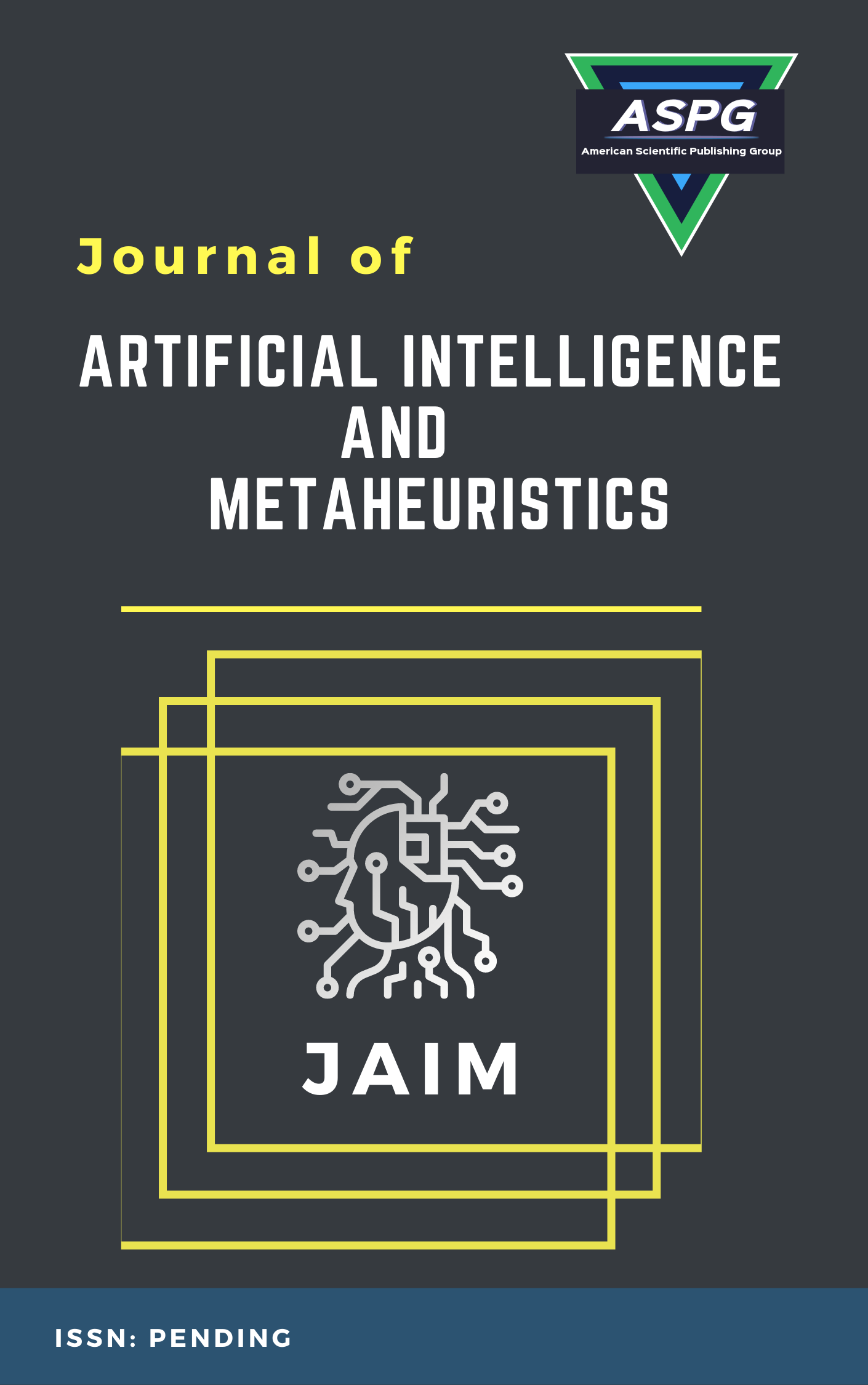

Volume 7 , Issue 2 , PP: 32-38, 2024 | Cite this article as | XML | Html | PDF | Full Length Article
Ahmed El-Sayed Saqr 1 * , El-Sayed M. El-Kenawy 2 , Mohamed S. Saraya 3
Doi: https://doi.org/10.54216/JAIM.070203
CO2 emission prediction is crucial for environmental policy and climate change mitigation. This review explores time series analysis and metaheuristic optimization in CO2 forecasting, summarizing research findings and methodological insights. Time series analysis uncovers past patterns and future trends, while metaheuristic methods like genetic algorithms optimize forecasting accuracy. Challenges include data quality, model complexity, and computational demands. However, the potential of advanced machine learning is a beacon of hope. It can revolutionize CO2 forecasting, making it more accurate and efficient. Composite models combining approaches show promise alongside real-time data integration and advanced machine learning. Future research should prioritize comprehensive databases and, importantly, stress the need for interdisciplinary collaboration to refine models. Improvements in forecasting can aid policy decisions and combat climate change, highlighting the growing need for accurate CO2 predictions and advanced analytical techniques.
CO2 Prediction , Time Series Analysis , Metaheuristic Optimization , Climate Policy , Machine Learning
[1] M. O. Faruque, M. A. J. Rabby, M. A. Hossain, M. R. Islam, M. M. U. Rashid, and S. M. Muyeen, “A comparative analysis to forecast carbon dioxide emissions,” Energy Reports, vol. 8, pp. 8046–8060, Nov. 2022, doi: 10.1016/J.EGYR.2022.06.025.
[2] M. O. Faruque, M. A. J. Rabby, M. A. Hossain, M. R. Islam, M. M. U. Rashid, and S. M. Muyeen, “A comparative analysis to forecast carbon dioxide emissions,” Energy Reports, vol. 8, pp. 8046–8060, Nov. 2022, doi: 10.1016/J.EGYR.2022.06.025.
[3] X. Zhao and D. Du, “Forecasting carbon dioxide emissions,” J Environ Manage, vol. 160, pp. 39–44, Sep. 2015, doi: 10.1016/J.JENVMAN.2015.06.002.
[4] L. Ye, P. Du, and S. Wang, “Industrial carbon emission forecasting considering external factors based on linear and machine learning models,” J Clean Prod, vol. 434, p. 140010, Jan. 2024, doi: 10.1016/J.JCLEPRO.2023.140010.
[5] Y. Meng and H. Norman, “Predicting CO2 Emission Footprint Using AI through Machine Learning,” Atmosphere (Basel), vol. 13, no. 11, Nov. 2022, doi: 10.3390/ATMOS13111871.
[6] F. Pan, Y. Yang, Y. Ji, J. Li, J. Zhang, and L. Zhong, “Application of improved graph convolutional networks in daily-ahead carbon emission prediction,” Front Energy Res, vol. 12, 2024, doi: 10.3389/FENRG.2024.1371507.
[7] M. Ozdemir, S. Pehlivan, and M. Melikoglu, “Estimation of greenhouse gas emissions using linear and logarithmic models: A scenario-based approach for Turkiye’s 2030 vision,” Energy Nexus, vol. 13, Mar. 2024, doi: 10.1016/j.nexus.2023.100264.
[8] P. Boontome, A. Therdyothin, and J. Chontanawat, “FORECASTING CARBON DIOXIDE EMISSION AND SUSTAINABLE ECONOMY: EVIDENCE AND POLICY RESPONSES,” International Journal of Energy Economics and Policy, vol. 9, no. 5, pp. 55–62, Sep. 2019, doi 10.32479/ijeep.7918.
[9] R. Alkanhel, E. S. M. El-Kenawy, D. L. Elsheweikh, A. A. Abdelhamid, A. Ibrahim, and D. S. Khafaga, “Metaheuristic Optimization of Time Series Models for Predicting Networks Traffic,” Computers, Materials and Continua, vol. 75, no. 1, pp. 427–442, 2023, doi: 10.32604/CMC.2023.032885.
[10] A. Alorf, “A survey of recently developed metaheuristics and their comparative analysis,” Eng Appl Artif Intell, vol. 117, p. 105622, Jan. 2023, doi: 10.1016/J.ENGAPPAI.2022.105622.
[11] A. N. Ahmed, T. Van Lam, N. D. Hung, N. Van Thieu, O. Kisi, and A. El-Shafie, “A comprehensive comparison of recent developed meta-heuristic algorithms for streamflow time series forecasting problem,” Appl Soft Comput, vol. 105, Jul. 2021, doi: 10.1016/J.ASOC.2021.107282.
[12] A. N. Ahmed, T. Van Lam, N. D. Hung, N. Van Thieu, O. Kisi, and A. El-Shafie, “A comprehensive comparison of recent developed meta-heuristic algorithms for streamflow time series forecasting problem,” Appl Soft Comput, vol. 105, p. 107282, Jul. 2021, doi: 10.1016/J.ASOC.2021.107282.
[13] M. O. Faruque, M. A. J. Rabby, M. A. Hossain, M. R. Islam, M. M. U. Rashid, and S. M. Muyeen, “A comparative analysis to forecast carbon dioxide emissions,” Energy Reports, vol. 8, pp. 8046–8060, Nov. 2022, doi: 10.1016/J.EGYR.2022.06.025.
[14] X. Zhao and D. Du, “Forecasting carbon dioxide emissions,” J Environ Manage, vol. 160, pp. 39–44, Sep. 2015, doi: 10.1016/J.JENVMAN.2015.06.002.
[15] Y. Meng and H. Noman, “Predicting CO2 Emission Footprint Using AI through Machine Learning,” Atmosphere (Basel), vol. 13, no. 11, Nov. 2022, doi: 10.3390/ATMOS13111871.
[16] L. Ye, P. Du, and S. Wang, “Industrial carbon emission forecasting considering external factors based on linear and machine learning models,” J Clean Prod, vol. 434, p. 140010, Jan. 2024, doi: 10.1016/J.JCLEPRO.2023.140010.
[17] Y. Meng and H. Noman, “Predicting CO2 Emission Footprint Using AI through Machine Learning,” Atmosphere (Basel), vol. 13, no. 11, Nov. 2022, doi: 10.3390/ATMOS13111871.
[18] M. O. Faruque, M. A. J. Rabby, M. A. Hossain, M. R. Islam, M. M. U. Rashid, and S. M. Muyeen, “A comparative analysis to forecast carbon dioxide emissions,” Energy Reports, vol. 8, pp. 8046–8060, Nov. 2022, doi: 10.1016/J.EGYR.2022.06.025.
[19] L. Ye, P. Du, and S. Wang, “Industrial carbon emission forecasting considering external factors based on linear and machine learning models,” J Clean Prod, vol. 434, p. 140010, Jan. 2024, doi: 10.1016/J.JCLEPRO.2023.140010.
[20] X. Zhao and D. Du, “Forecasting carbon dioxide emissions,” J Environ Manage, vol. 160, pp. 39–44, Sep. 2015, doi: 10.1016/J.JENVMAN.2015.06.002.
[21] L. Ye, P. Du, and S. Wang, “Industrial carbon emission forecasting considering external factors based on linear and machine learning models,” J Clean Prod, vol. 434, p. 140010, Jan. 2024, doi: 10.1016/J.JCLEPRO.2023.140010.
[22] Y. Meng and H. Noman, “Predicting CO2 Emission Footprint Using AI through Machine Learning,” Atmosphere (Basel), vol. 13, no. 11, Nov. 2022, doi: 10.3390/ATMOS13111871.
[23] S. Zeng and C. Yi, “A study of the potential for peak carbon dioxide emissions in metropolitan areas: the case of China,” Environ Monit Assess, vol. 195, no. 6, pp. 1–21, Jun. 2023, doi: 10.1007/S10661-023-11371-X/TABLES/5.
[24] X. Zhao and D. Du, “Forecasting carbon dioxide emissions,” J Environ Manage, vol. 160, pp. 39–44, Sep. 2015, doi: 10.1016/J.JENVMAN.2015.06.002.
[25] S. Zeng and C. Yi, “A study of the potential for peak carbon dioxide emissions in metropolitan areas: the case of China,” Environ Monit Assess, vol. 195, no. 6, pp. 1–21, Jun. 2023, doi: 10.1007/S10661-023-11371-X/TABLES/5.